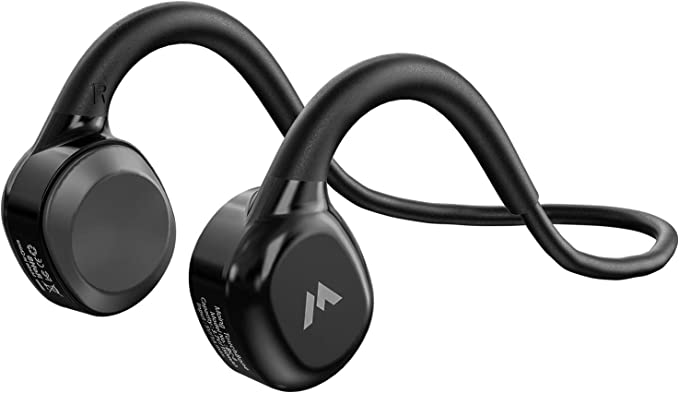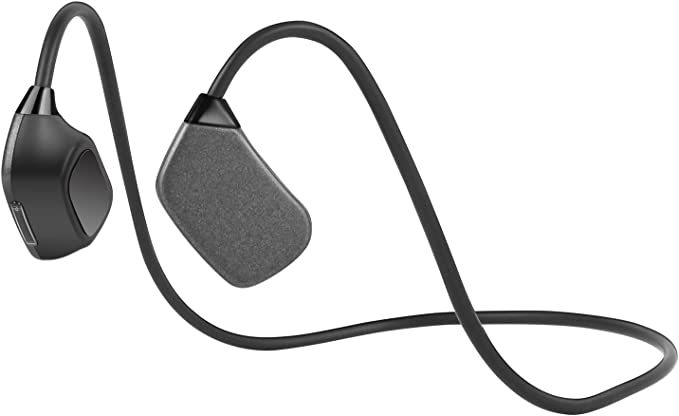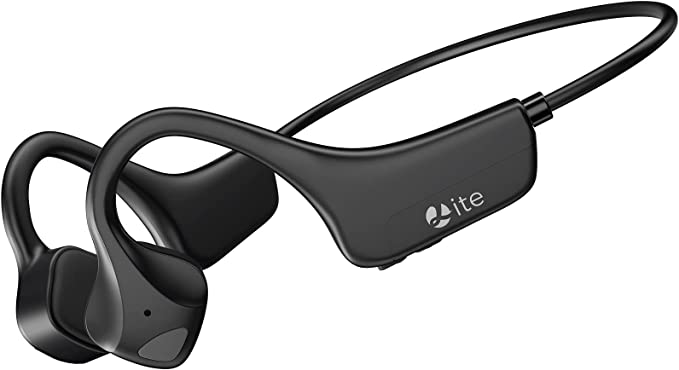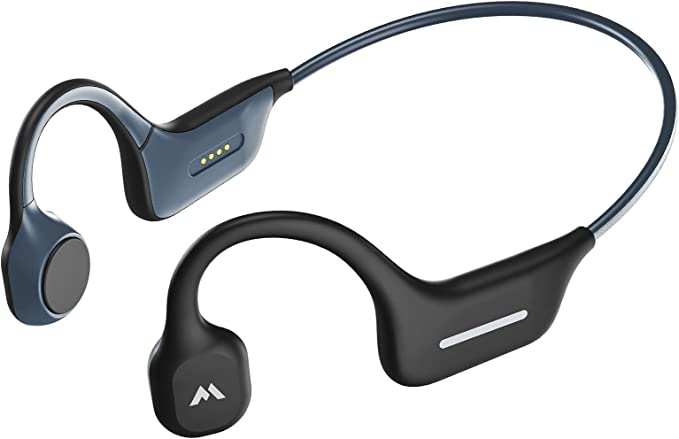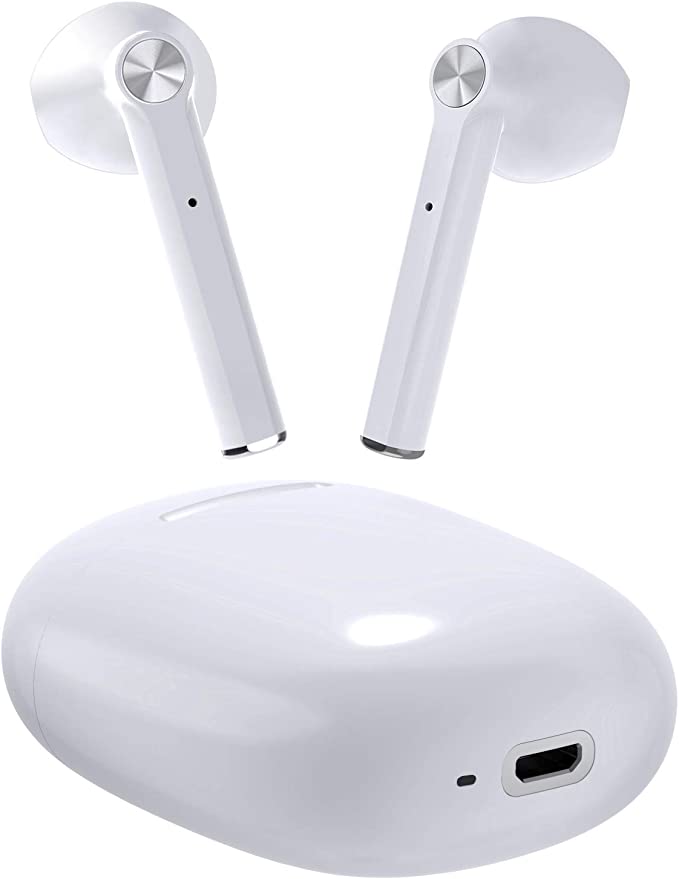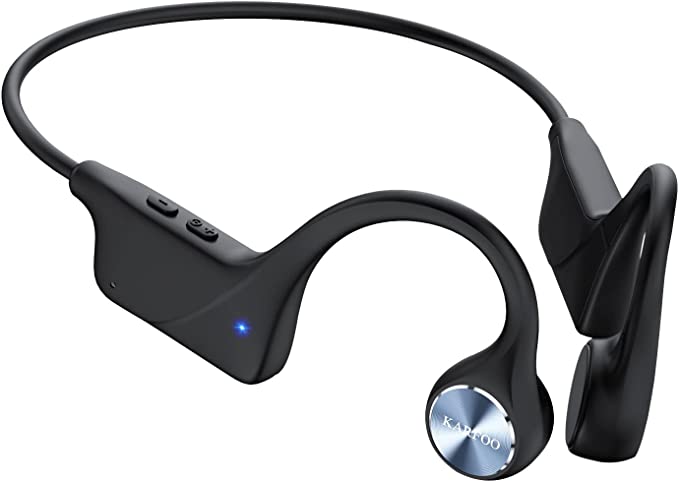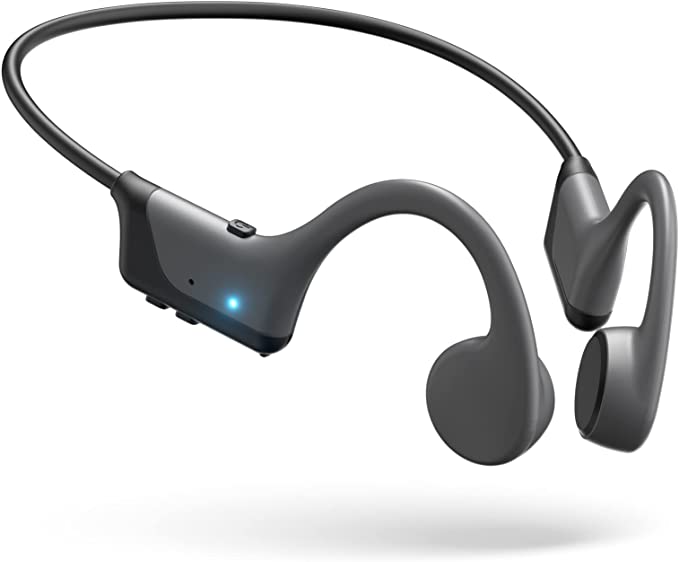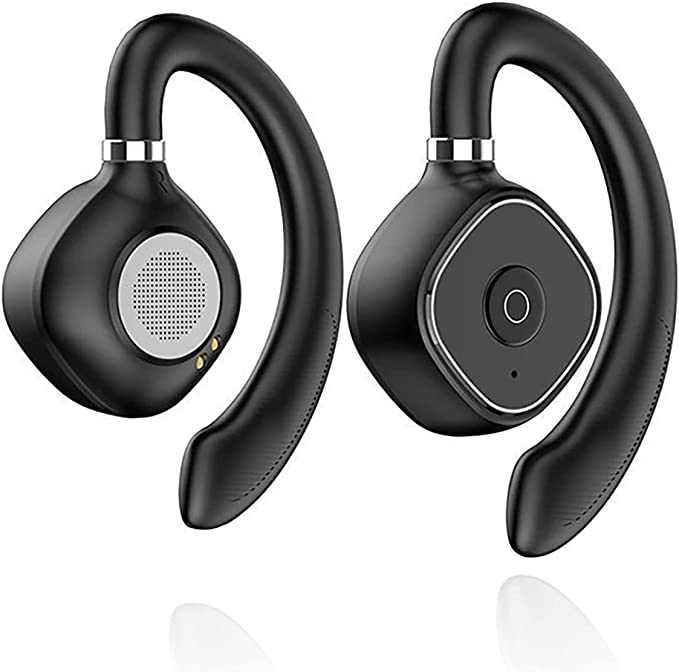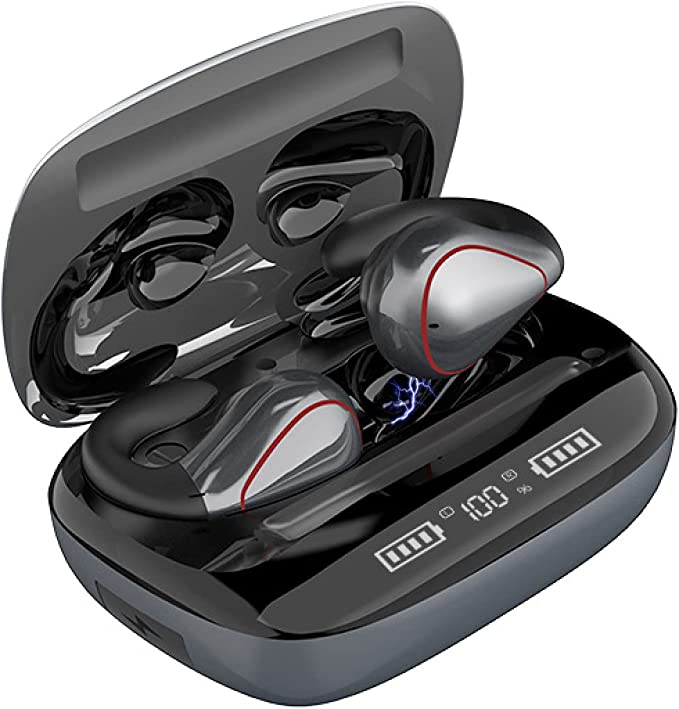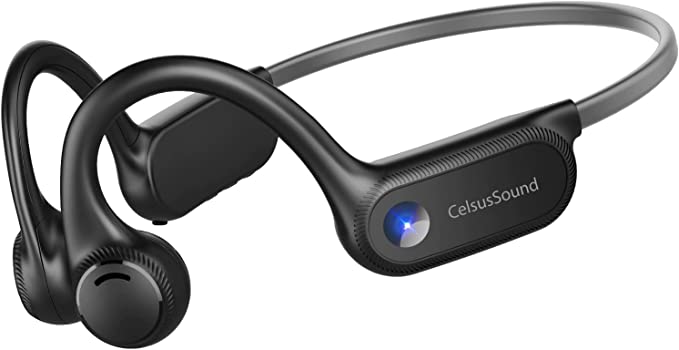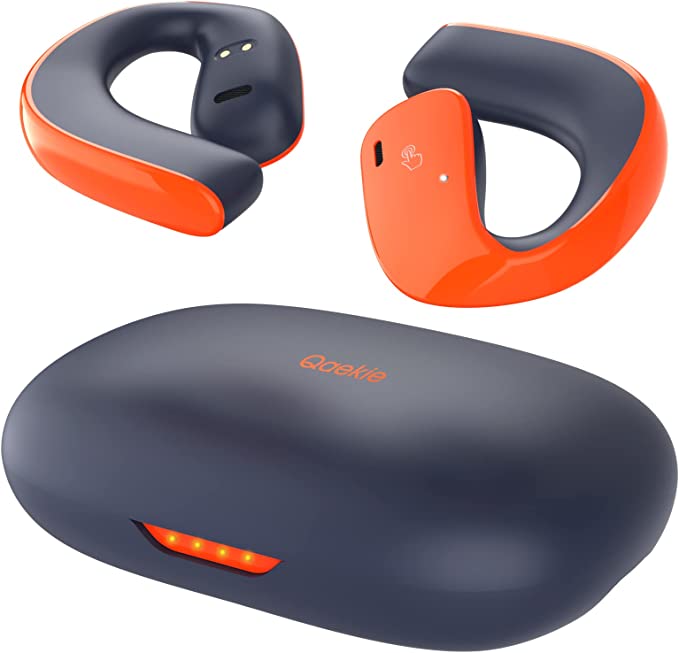The Open-Ear Dilemma: Air Conduction vs. Bone Conduction Explained
Update on Oct. 30, 2025, 2:25 p.m.
You’ve seen them. That runner who passed you, clearly listening to music, but with nothing in their ears. Or maybe your coworker, sitting at their desk, seemingly tuned into a podcast while still hearing every word you say.
This is the world of open-ear audio, a technology that’s rapidly moving from a niche gadget to a mainstream category.
But just as you’ve wrapped your head around the idea, you’re hit with a new layer of confusion. You see terms like “Bone Conduction” and “Air Conduction” thrown around. They both promise “situational awareness,” but they work in fundamentally different ways.
So, what’s the real difference? And which one is the right choice for you?
As your guide in this, let’s clear up the confusion. We’re not just going to define these terms; we’re going to deconstruct the “why” behind their engineering.
First, Why Go “Open-Ear” at All?
Before we get into the how, let’s lock in the why. The entire open-ear category is built on one core promise: situational awareness.
Traditional earbuds and headphones are occlusive. They create a physical seal in or over your ear canal. This is fantastic for audio isolation—blocking out the world to get the deepest bass and most detailed sound.
But this isolation is a bug, not a feature, in many situations: * Safety: A cyclist needs to hear a car horn. A runner needs to hear a bicycle bell. A pedestrian needs to be aware of their surroundings. * Comfort: Many people dislike the “plugged up” feeling of silicone tips, especially after hours of wear. This pressure can be fatiguing. * Social: You want to listen to an audiobook while cleaning, but still hear your kids in the other room. You want to have music at your desk, but not be the person who forces colleagues to tap you on the shoulder.
Open-ear audio solves this by leaving your ear canal completely unobstructed. The goal is to layer your personal audio onto your environment, not use it to replace it.
Now, let’s look at the two main ways engineers have achieved this.
Path 1: Bone Conduction (The “Vibration” Method)
This is the technology that first brought open-ear listening to the mainstream.
How It Works:
Bone conduction headphones don’t have speakers in the traditional sense. Instead, they have transducers that rest on your cheekbones, just in front of your ears.
These transducers do something fascinating: they vibrate. They send tiny, rapid vibrations through your bones (specifically, your temporal and zygomatic bones) directly to your inner ear (cochlea), completely bypassing your eardrum. Your brain then interprets these vibrations as sound.
- The Mentor’s Analogy: Think of a contact microphone on an acoustic guitar. It doesn’t “hear” the air; it picks up the vibrations directly from the wood. That’s bone conduction.
Pros: * Your ear canal is 100% open and untouched. * Excellent for high-awareness activities (e.g., competitive running, cycling). * Can be beneficial for some individuals with specific types of conductive hearing loss.
Cons: * The “Tickle”: At high volumes or with heavy bass, the vibration can feel “tickly” or strange to some users. * Sound Quality: Because it bypasses the natural acoustics of the ear canal and eardrum, audiophiles often find the sound (especially bass) to be thinner. * Sound Leak: The vibrations can be “felt” by the device’s own frame, which then vibrates the air around it, causing sound to leak out.
Path 2: Air Conduction (The “Directional Sound” Method)
This is the other, and arguably more intuitive, approach to open-ear audio.
How It Works:
Open-ear air conduction earbuds do use traditional speakers (called drivers). But instead of sealing them inside your ear, they are positioned just outside the ear canal.
The entire engineering challenge is to direct the sound precisely into your ear canal without it “leaking” and spraying sound in all directions.
- The Mentor’s Analogy: If bone conduction is a contact mic, air conduction is like a pair of tiny, highly directional speakers. Think of them as miniature sound-bars, angled perfectly at your eardrum.
This method aims for the best of both worlds: the unblocked ear canal of bone conduction combined with the more “traditional” and full-range sound of a dynamic driver.
A Practical Case Study: Deconstructing Air Conduction Tech
Since this method is all about engineering, let’s use a real-world example to see what design choices are necessary. Take the Monster Open AC330, for instance. Looking at its specs, we can see why it’s built the way it is.

The Monster Open AC330 uses an ear-hook design to position its driver outside the ear canal.
1. The Challenge: Delivering Bass Without a Seal
- The Problem: When you seal an earbud (like an Apple AirPods Pro), you trap air. The tiny driver can easily move this small pocket of air to create powerful-feeling bass. With an open design, there is no seal. Bass frequencies will just dissipate into the open air.
- The Engineering Solution: You need a much larger driver to compensate. The AC330 is listed as having 14.2mm customized drivers. This is significantly larger than a typical 6mm or 8mm driver in a “bud.” This large diaphragm is needed to move more air, projecting a fuller sound toward the ear to make up for the lack of a seal. It’s a brute-force (and effective) physics solution.

Large 14.2mm drivers are used to create a full sound experience without sealing the ear.
2. The Challenge: Stability and Comfort
- The Problem: If the device isn’t wedged in your ear, what holds it on? And how do you make it comfortable for all-day wear?
- The Engineering Solution: An ear-hook design. By looping over the ear, the device is stabilized by your ear’s natural shape. The spec sheet lists the AC330 at only 7 grams, which is critical. Any heavier, and the hook would create a painful pressure point over time. This combination of an ear hook and a lightweight build aims for a “virtually weightless” feel, where you forget you’re wearing it.

The combination of an ear hook and a 7-gram weight is an engineering solution for all-day stability without pressure.
3. The Challenge: Powering an Unsealed System
- The Problem: An open-air system is inefficient. You’re competing with ambient noise, which often means you need to turn the volume up. Furthermore, a large 14.2mm driver requires more power to move than a tiny one. This all points to a battery life nightmare.
- The Engineering Solution: This is where modern tech comes in. The product features Bluetooth 5.4. This isn’t just a number. Newer Bluetooth standards (like 5.3 and 5.4) are significantly more power-efficient, especially with data transfer (audio). This efficiency, combined with the large battery capacity in the charging case, is what allows a product like this to claim 8 hours of playback on the buds and 24 hours total with the case.

A rotating case with a lanyard provides 24 hours of total playtime and protects the earbuds.
4. The Challenge: Surviving the Real World
- The Problem: If these are for runners, cyclists, and gym-goers, they are going to encounter sweat, rain, and grime.
- The Engineering Solution: An IPX5 Water Resistance rating. Let’s decode this: ‘IP’ stands for Ingress Protection. The ‘X’ means it wasn’t rated for dust. The ‘5’ is the key: it’s protected from water jets from any direction.
- What this practically means: Sweat and heavy rain are no problem. You can rinse them off (gently) after a workout.
- What it does NOT mean: It is not waterproof. You cannot swim with them. IPX5 is about surviving, not submerging.

An IPX5 rating means the hardware is designed to withstand sweat and rain during workouts or commutes.
How to Choose: Air vs. Bone
So, you now understand the two technologies. The “open-ear dilemma” is solved. Which one is for you?
You should choose BONE CONDUCTION if: * You absolutely cannot stand anything in or on your ear opening. * You are extremely sensitive to the “plugged” feeling. * You are a high-endurance athlete (like a marathoner or triathlete) where every gram and potential point of irritation matters. * You are not an “audiophile” and are willing to trade some sound fidelity for maximum awareness.
You should choose AIR CONDUCTION (like the AC330) if: * You want the awareness of an open-ear design but find the “vibration” of bone conduction strange. * You care more about audio quality and want a richer, fuller sound with better bass (thanks to those large drivers). * You plan to wear them for long periods at a desk or on commutes, where all-day comfort is paramount. * You want a more “traditional” listening experience, just… open.
It’s not about one technology being “better.” It’s about two different engineering solutions for two slightly different users. The future of audio isn’t just about escaping the world; it’s about finding smarter ways to bring our own soundtracks into it.
